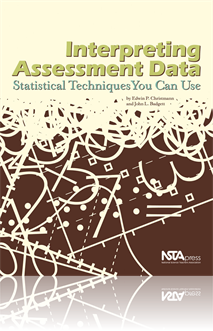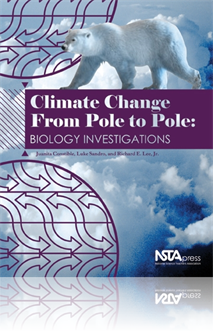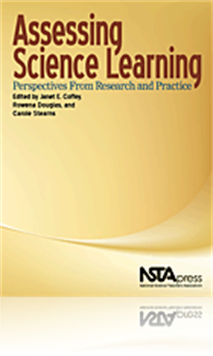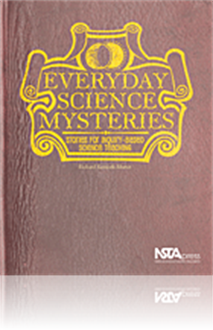All Book Chapters
Book Chapter
In this chapter, the authors will discuss the following types of standard scores: percentile ranks, z-scores, and T-scores. All are based on concepts—such as the mean, the normal distribution, and the standard deviation—already familiar to you fr...
Book Chapter
This chapter will discuss the concept of correlation, which is used in later chapters that will explain the concepts of validity and reliability. Here, the authors introduce the Pearson correlation coefficient, a statistic that is used with ratio or ...
Book Chapter
In this chapter, the authors will describe the four types of validity: construct validity, content validity, concurrent validity, and predictive validity. Depending on the test and the rationale or purpose for its administration, and understanding of...
Book Chapter
In essence, reliability is the consistency of test results. To understand the meaning of reliability and how it relates to validity, imagine going to an airport to take flight #007 from Pittsburgh to San Diego. If, every time the airplane makes the f...
Book Chapter
Many criticisms have been launched against grades in general because of their perceived failure to portray student achievement accurately. In many instances, these criticisms are just. But, if student grades are reflections of measurable instructiona...
Book Chapter
Climate is the state of the atmosphere over years or decades. Although climate is commonly defined as “average weather,” the term encompasses more than a simple mean. It also refers to variability, seasonality, and extremes in climate elements su...
Book Chapter
Scientists expect that a warmer climate will cause more severe, more frequent, and longer heat waves. Heat waves pose a significant health risk to everyone, but especially to poor, elderly, and chronically ill individuals. In this open-ended inquiry,...
Book Chapter
In 1896, Svante Arrhenius published the first model of the effects of industrial carbon dioxide (CO2) on Earth’s climate. Since the days of Arrhenius, scientists have moved from pencils to supercomputers. Calculations take hours or days instead of ...
Book Chapter
Biological Effects of Climate Change
How important is climate change—something that has occurred throughout Earth’s history? Can ecosystems tolerate the magnitude and rate of future change? How will other conservation threats interact with climate change? How likely are widespread e...
Book Chapter
This “Quick Guide to Climate” is a brief, student-friendly overview of Chapters 1 through 3. The overview is suitable either for introducing climate change to your students or for reviewing key concepts at the end of a unit. You can also use the ...
Book Chapter
Rising air temperatures have changed the extent and timing of sea ice formation in the Arctic, forcing some polar bear populations to go longer each year without food. In this activity, students assume the role of graduate students advising an intern...
Book Chapter
Carrion: It’s What’s for Dinner
The restoration of wolves to Yellowstone National Park after a 70-year absence created a natural experiment on the ecological effects of top predators. In this activity, students use mathematical models to explore how carrion from wolf kills can redu...
Book Chapter
Songbirds tend to breed at the same time their primary prey is most abundant. Climate warming appears to be disrupting this match, causing reproductive failures in some species. Scientists have detected the consequences of warming for birds primarily...
Book Chapter
Pollen allergies are becoming more prevalent globally, in part because of the effect of climate on pollen-producing plants. In this problem-based learning activity, students assume the role of public relations specialists contracted to communicate th...
Book Chapter
Animal Kingdom: Shark Advocate
Most sharks are the top predators in their ecosystems, yet they are often at the bottom of the conservation priority list. Because they are underprotected and exceptionally slow growing, and therefore vulnerable to overfishing, most of the world’s ...
Book Chapter
Improving Learning in Science With Formative Assessment
In recent years, the No Child Left Behind law has focused attention on student achievement in science across the United States, but there are more important reasons for being concerned with student achievement. The focus of this chapter is about how ...
Book Chapter
Using Standards And Cognitive Research To Inform The Design And Use Of Formative Assessment Probes
In their work with teachers, the authors use a process called Curriculum Topic Study (CTS) developed through our National Science Foundation–funded project, “Curriculum Topic Study–A Systematic Approach to Utilizing National Standards and Cogni...
Book Chapter
Assessment Linked To Science Learning Goals: Probing Student Thinking Through Assessment
The focus of this chapter is on how to design science assessment items that are linked to the content standards in Benchmarks for Science Literacy and the National Science Education Standards....
Book Chapter
Assessing Science Literacy Using Extended Constructed-Response Items
The authors’ goal in this chapter is to provide teachers with information that will make them better formative and summative assessors; better judges of the quality of state, national, and international assessments that their students experience; a...
Book Chapter
Aligning Classroom-Based Assessment With High-Stakes Tests
In this chapter, the authors will focus on the types of assessments found on high-stakes tests that can and should be used in middle-grades science classrooms. The authors provide a model for analyzing the kinds of information these types of assessme...
Book Chapter
This chapter summarizes some of the findings and recommendations of the National Research Committee (NRC) on Test Design for K-12 Science Achievement and is based on the committee’s final, book-length Report—Systems for State Science Assessment (...
Book Chapter
From Reading To Science: Assessment That Supports And Describes Student Achievement
This chapter is based on a presentation made to the National Science Teachers Association’s conference on assessment, “Science Assessment: Research and Practical Approaches for Grades 3-12 Teachers and School District Administrators”, held in N...
Book Chapter
What Research Says About Science Assessment With English Language Learners
This chapter addresses what research says about science assessment with English Language Learners (ELL) students. Specifically, the authors draw from our ongoing research and development efforts to promote science and literacy achievement of ELL stud...
Book Chapter
This chapter describes how elementary science staff in the Seattle Public Schools extended the district’s infrastructure and support system to help teachers prepare their students for the state assessment tests (Washington Assessment of Student Lea...
Book Chapter
Linking Assessment To Student Achievement In A Professional Development Model
This chapter reviews assessment as a key component in a professional development model implemented in a National Science Foundation–funded program entitled Toledo Area Partnership in Education: Support Teachers as Resources to Improve Elementary Sc...
Book Chapter
Using Assessment Design As A Model Of Professional Development
In this chapter, the authors describe a professional development model in which teachers collaborated with science content experts, assessment experts, and researchers to create a series of formative assessments to accompany each of their science uni...
Book Chapter
On the Role and Impact of Formative Assessment on Science Inquiry Teaching and Learning
In this chapter, the authors begin by describing what they mean by formative assessment and outline the potential and challenges of trying to implement and study this promising technique for scientific inquiry teaching. Next they describe their study...
Book Chapter
Using Formative Assessment And Feedback To Improve Science Teacher Practice
The authors in this chapter advocate use of the Reformed Teacher Observation Protocol (RTOP). This tool was originally developed for research on secondary physics teacher’s classroom practices, by science teachers for self-evaluation of their own a...
Book Chapter
Using Data To Move Schools From Resignation To Results: The Power Of Collaborative Inquiry
In this chapter, the author studies the impact of school communities’ analysis of multiple sources of student assessment data on their instructional decisions and organizational responses. The author poses simple questions that school groups can us...
Book Chapter
From Practice to Research and Back: Perspectives and Tools in Assessing for Learning
In this chapter, the authors draw on research and teacher practice to share the story of their own professional inquiry that led them to an exciting marginal space between the worlds of classroom teachers and education researchers. This chapter is in...
Book Chapter
Documenting Early Science Learning
Young children are fascinated by the natural world. They think about how things work, what is alive, and why some things change their shape and form. Science explorations such as planting, animal studies, and cooking are a natural part of early child...
Book Chapter
Using Science Notebooks as an Informal Assessment Tool
Science notebooks have been promoted as a means to enhance students’ scientific and literacy skills and as formative assessment tools for teachers. The author hopes this chapter will help you find ways to make science notebooks more effective tools...
Book Chapter
In this chapter, the authors discuss an instructional framework for scientific explanations, provide a set of rubrics to assess student work, illustrate types of feedback to give students, and describe how to develop assessment tasks to assess studen...
Book Chapter
Assessment Of Laboratory Investigations
The assessment of a laboratory investigation has two distinct components. The first is an evaluation of the quality of the laboratory investigation itself: Does it meet the criteria for a desired laboratory experience? The second is an evaluation of ...
Book Chapter
Assessing Science Knowledge: Seeing More Through the Formative Assessment Lens
In this chapter, the authors focus on classroom assessment practice, with emphasis placed on embedded diagnostic assessment. Embedded assessment activities require teachers and students to rethink their responsibilities in the classroom learning comm...
Book Chapter
Exploring the Role of Technology-Based Simulations in Science Assessment: The Calipers Project
In this chapter, the authors describe a project funded by the National Science Foundation, “Calipers: Using Stimulation to Assess Complex Science Learning.” This project is a two-year demonstration project that aims to use technology-supported �...
Book Chapter
This book, and particularly the stories which lie within, provide an opportunity for students to take ownership of their learning and learn science in a way that will give them a more positive attitude about science. In addition, it will serve to hel...
Book Chapter
The mystery here has a lot to do with the life cycle of the insect in the cereal and what the various stages were that Emma found in the box. However, it is important that children get to know more about the most populous animals on our planet. It is...
Book Chapter
Water makes up a very high percentage of all living things. This story is aimed at providing children with the opportunity to measure the surprising amount of water found in fruit. It also provides an opportunity for the teacher to emphasize the impo...
Book Chapter
Children as well as adults are usually intrigued by the ideas of bargains. More seeds for less money is often enough to convince them to buy a larger, cheaper package. In this case, the children are savvy enough to question the value of either packag...







